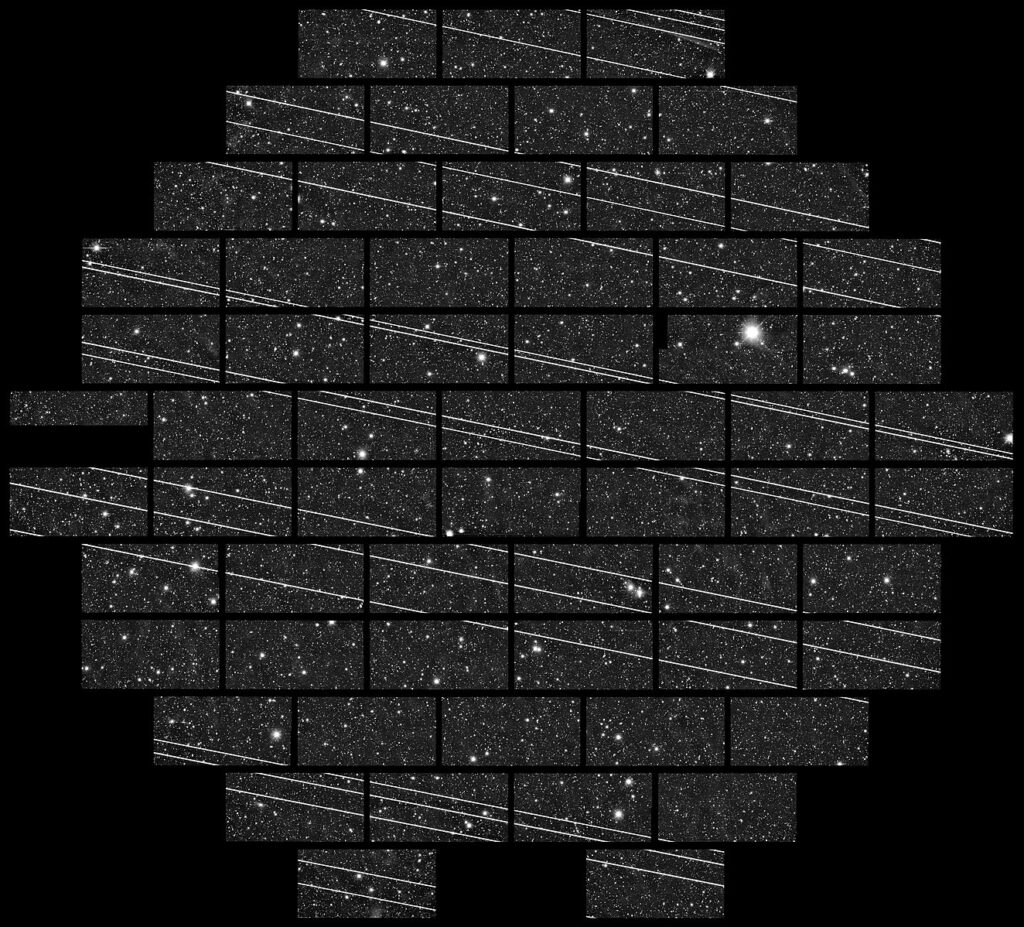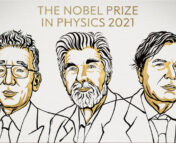Title: The impact of satellite constellations on space as an ancestral global commons
Authors: Aparna Venkatesan, James Lowenthal, Parvathy Prem, and Monica Vidaurri
First Author’s Institution: Department of Physics and Astronomy, University of San Francisco, San Francisco, CA, USA
Status: Published by Nature Astronomy [open access]
“Oh! Is that a shooting star?”
These days, probably not. This past summer, a group of astronomy students and I drove a couple hours out of the city to go on a stargazing trip. For a number of them, it was the first time they had ever seen the Milky Way smeared across the night sky. Sometimes the little points of light would move and catch our eyes — the crowd would gasp and exclaim excitedly, hoping to make a wish on a shooting star. However, most of the time the moving bright spot would chug steadily across the sky rather than streaking by like a meteor, or blinking past like a plane; they were satellites.
Amidst the growing number of artificial satellites being launched, stakeholders in the night sky — including the authors of today’s paper — have been speaking up and taking action to mitigate the negative impact of these satellite constellations on astronomy, humanity, and the Earth.
The lowdown on LEOsats
A quick Google search tells me that as of January 1, 2021, there are about 6,500 satellites in space, some active and some inactive. Now, with private companies like SpaceX and Amazon launching and planning future satellite constellations, it is likely that by 2030, near Earth space will be enveloped by around 100,000 satellites.
Satellites are broadly used as communication devices, and we’ve been using them for science for a while now. Tiny satellites called CubeSats have become popular research tools recently, as they are inexpensive and flexible. Even some of my peers have constructed them and sent them into orbit to collect data for research. Their accessibility and feasibility supports a more global participation in science.
As for satellite constellations, the main selling point is to provide global connectivity, with the goal of bringing wider access to broadband internet and reducing the digital divide harming underserved communities. The past year or two has highlighted how essential internet access is, especially with the ongoing COVID-19 pandemic and the transition to virtual working, learning, and socializing. While broader access to internet is certainly a worthy goal, concerns remain about whether the internet coverage from satellite constellations will actually fulfill their promise of providing high-speed broadband at a cost feasible enough for underserved communities.
Direct impact to astronomy
Satellite constellations filling up the sky limits our ability to conduct astronomical observations, and therefore study the Universe. The authors of today’s paper point out the irony that astronomy itself, with many institutions and facilities built on the traditional land of Indigenous peoples (see these Astrobites on Mauna Kea and southwest U.S. observatories), is now threatened by the colonization of space by the satellite industry.
Satellites affect every wavelength of observation from optical to radio. Bright streaks in images as seen in Figure 1 have already been harming telescope data or rendering science images useless. Further, the increase in satellites’ use of radio frequencies has introduced another form of radio interference which impacts our radio telescopes.

Direct collisions between satellites or between a satellite and a space telescope are also a constant threat. The extreme version of satellite collisions is called the Kessler syndrome: as satellites collide and break into smaller pieces, the thousands of new satellite fragments start a cascading series of high speed collisions that ends up as a swath of trash surrounding the Earth. In this way, LEOsats can become their own worst enemy.
For a more thorough, technical review of the implementation of LEOsats and their impact on observational astronomy, check out this Astrobite.
Colonization in space
The fallout from this crisis — the satellite industry’s colonization of space — is felt disproportionately by the same communities facing structural inequalities at large. The main concerns are in both the short and long term — ecological (many animals rely on the night sky to navigate, for example), environmental (use and waste of resources to launch and produce; not all deorbited satellites have reusable components), ethical (Indigeneous uses such as Polynesian navigation techniques, cultural and religious significance, sacred and historical natural resources), and more.
The authors note that space is turning into a militarized colonial environment rather than the collaborative, peaceful place it has been for millenia. With little coordinated international regulation, no discussion of ethical considerations, and no consensus building with all stakeholders, our night sky and near Earth space are becoming a “playground for billionaires”.
While some space-related treaties exist, many protect seemingly arbitrary human and historical interest in space, like the footprints left on the Moon. Shouldn’t the cultural significance of the Moon itself outweigh the boot-prints and rubbish left recently on the Moon’s surface? Existing international regulations are outdated and nonbinding, featuring lots of strategic loopholes — especially for private companies, which happen to be the main players in this case. These private companies are racing against a nonexistent clock to colonize, conquer, and extract resources, as has been done before for various minerals on Earth, and even knowledge itself. The rise of satellite constellations in space is reminiscent of Manifest Destiny in the western U.S.; with the promise of opportunity, freedom, and access but the reality of imperialism.
A global ancestral commons
The authors advocate for rethinking space as a shared community resource, implementing regulations and accountability to protect the heritage and future of humanity’s scientific and cultural practices related to the night sky. They suggest ethics-based cooperative efforts to maintain international regulations that include the perspectives of all stakeholders, rather than just private companies and astronomers.
In their paper, the authors refer to space as an ancestral global commons: unowned shared resources for humanity, like the atmosphere and the ocean. However, in April 2020 the White House issued an Executive Order stating: “Outer space is a legally and physically unique domain of human activity, and the United States does not view it as a global commons.”
Near earth space is being altered quietly and permanently, and at least from the U.S. government’s perspective, it is a thing to be owned and controlled by a few private entities rather than shared by humanity. Regardless of governments’ official stances, we as inhabitants of Earth are inherently tied to near Earth space’s ultimate fate. The authors end the paper with a call to action: to reject the idea that space is something to own and extract from, and to embrace, respect, and protect the cultural and scientific ancestry of space to Earth and its inhabitants.
As a starting point to get involved in ongoing efforts by astronomers and other stakeholders in protecting our night sky, check out these conferences and resources:
- Dark and Quiet Skies for Science and Society II Conference
- Reports from previous workshops: SATCON1 & SATCON2
Astrobite edited by Pratik Gandhi
Featured image credit: iStock.com/dottedhippo





Thank you, Olivia, for the most intelligent and culturally significant article that I have read on the concealed realities of industrial space colonisation. I have sent your astrobite to every astronomer I know and have asked them to do the same.
=Doug Bullis, South Africa